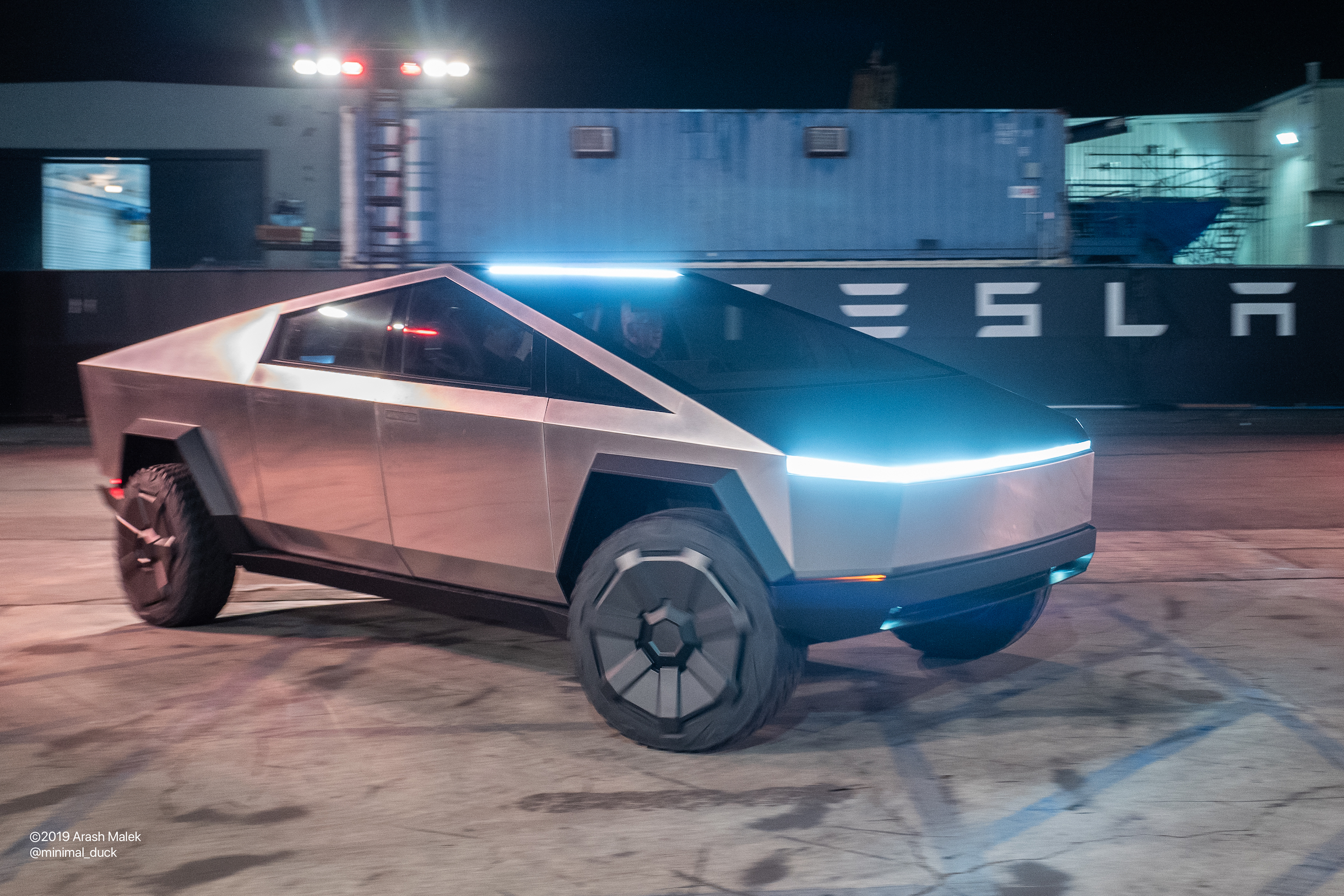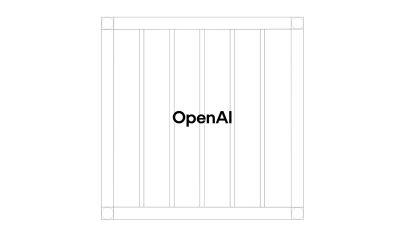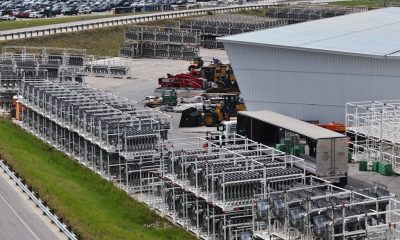

News
Tesla’s Elon Musk shuts the door on Gigafactory Texas talk, but for how long?
George Strait once said that all of his exes live in Texas, and maybe Elon Musk doesn’t want his new electric vehicle facility to be infiltrated by the country music legend’s past lovers.
Just kidding.
While we all patiently wait for Tesla’s CEO to announce the location of its next vehicle production plant, I was pretty sure that Texas had been confirmed as the spot. After seeing some reports, I dug a little deeper and found that the State of Texas had some records, including purchase price agreements, on a plot of land just outside of Austin.
However, when I reported the news, Elon responded and told us at Teslarati that the company had the option to buy the land, but they had not secured a purchase agreement and exercised its right to purchase the property.
I have to admit, I was pretty shocked. I have been following the situation closely for months, and it is pretty evident that Texas certainly has the most advantages. Not to mention, Elon definitely seems to be leaning toward it. He’s been talking about Texas since January, and we’ve already talked about the distinct advantages the state holds over any other location.
However, Musk wasn’t done there. He then added that Tesla was looking at several locations. I’m assuming Tulsa, Oklahoma, is also in the mix considering that has been a location that is very open to taking its oil roots and trading them in for a new electrified infrastructure that will create a string of sustainable transportation production lines in the state.
However, it is really evident that Tesla might be having some second thoughts on the Lone Star State…or are they?
First, let’s consider the details of the land plot in question in Texas. It’s 2,100 acres, its $5.2 million bucks, and its really perfect for what Tesla has wanted. We know that the new factory is set to be the biggest one yet because both Zachary Kirkhorn and Elon said they are going to start calling the factories “Tera” instead of “Giga.”
To put the size of the land into perspective, Fremont sits on 370 acres, Giga Shanghai on 210 acres, and Giga Berlin on 740 acres. This means the prospective Texas land plot is nearly three times as big as Giga Berlin, which is the factory that will produce Tesla cars for all of Europe, and it is all going to be used to create the Cybertruck and the Model Y.
We know the demand for the Cybertruck is enormous. The pre-order number is not officially public knowledge. Still, there is some indication that Tesla is getting near three-quarters of a million reservations for the truck and its tough, robust exterior.
This is a preview from our weekly newsletter. Each week I go ‘Beyond the News’ and handcraft a special edition that includes my thoughts on the biggest stories, why it matters, and how it could impact the future.
A big thanks to our long-time supporters and new subscribers! Thank you.
We know that Tesla wants to build the plant in the middle of the country. That could mean anything, from North Dakota to Texas literally, and it could go slightly West to Colorado, and slightly East to Missouri. That’s what is confusing.
Now that there are apparently “several locations” in the mix, the real question is: Why is the Texas deal taking so long? Is Tesla looking to negotiate an even lower price? I decided to dig a little more.
According to Texas A&M University’s “Texas Rural Land Prices” page, where the college has the price of land from Q4 1971 up until Q1 2020, the most recent cost of an acre of property in the state is $2,986. The prospective plot of land where Tesla could build its next factory is 2,100 acres. So the value of the property, according to these statistics, is $6,270,600. According to the application that Tesla and the State of Texas have, the land price that was agreed upon is $5,298,275, giving the company a nearly $1 million discount. It is about a 16% discount according to my handy, dandy calculator.
Texas has also announced its intentions to give the automaker a sweet incentive package to the tune of $68 million, according to reports. That’s a lot of scratch, and it could certainly help with the purchase price, the labor costs of constructing the building, and more.
It is just tough to say why the deal is taking a while. The Cybertruck’s Dual and Tri-Motor variants are going to be produced at the tail-end of 2021, and with Tesla’s track record with the Model Y in the US and the Model 3 in China, they’ll be built well before then. That would give Tesla, if the company started construction in July, 18 months to complete the Cybertruck portion of the factory. Fremont could handle Model Y production until the new factory’s Phase 2 is completed.
I am personally excited to see where the factory ends up, and I really, genuinely think that Texas is where the factory will end up.
Where do you think the factory will be when its all said and done? And why do you think Tesla is kind of dragging its feet through the purchase process?
News
These Tesla, X, and xAI engineers were just poached by OpenAI
The news is the latest in an ongoing feud between Elon Musk and the Sam Altman-run firm OpenAI.

OpenAI, the xAI competitor for which Elon Musk previously served as a boardmember and helped to co-found, has reportedly poached high-level engineers from Tesla, along with others from xAI, X, and still others.
On Tuesday, Wired reported that OpenAI hired four high-level engineers from Tesla, xAI, and X, as seen in an internal Slack message sent by co-founder Greg Brockman. The engineers include Tesla Vice President of Software Engineering David Lau, X and xAI’s head of infrastructure engineering Uday Ruddarraju, and fellow xAI infrastructure engineer Mike Dalton. The hiring spree also included Angela Fan, an AI researcher from Meta.
“We’re excited to welcome these new members to our scaling team,” said Hannah Wong, an OpenAI spokesperson. “Our approach is to continue building and bringing together world-class infrastructure, research, and product teams to accelerate our mission and deliver the benefits of AI to hundreds of millions of people.”
Lau has been in his position as Tesla’s VP of Software Engineering since 2017, after previously working for the company’s firmware, platforms, and system integration divisions.
“It has become incredibly clear to me that accelerating progress towards safe, well-aligned artificial general intelligence is the most rewarding mission I could imagine for the next chapter of my career,” Lau said in a statement to Wired.
🚨Optimistic projections point to xAI possibly attaining profitability by 2027, according to Bloomberg's sources.
If accurate, this would be quite a feat for xAI. OpenAI, its biggest rival, is still looking at 2029 as the year it could become cash flow positive.💰 https://t.co/pE5Z9daez8
— TESLARATI (@Teslarati) June 18, 2025
READ MORE ON OPENAI: Elon Musk’s OpenAI lawsuit clears hurdle as trial looms
At xAI, Ruddarraju and Dalton both played a large role in developing the Colossus supercomputer, which is comprised of over 200,000 GPUs. One of the major ongoing projects at OpenAI is the company’s Stargate program,
“Infrastructure is where research meets reality, and OpenAI has already demonstrated this successfully,” Ruddarraju told Wired in another statement. “Stargate, in particular, is an infrastructure moonshot that perfectly matches the ambitious, systems-level challenges I love taking on.”
Elon Musk is currently in the process of suing OpenAI for shifting toward a for-profit model, as well as for accepting an investment of billions of dollars from Microsoft. OpenAI retaliated with a counterlawsuit, in which it alleges that Musk is interfering with the company’s business and engaging in unfair competition practices.
Elon Musk confirms Grok 4 launch on July 9 with livestream event
News
SpaceX share sale expected to back $400 billion valuation
The new SpaceX valuation would represent yet another record-high as far as privately-held companies in the U.S. go.

A new report this week suggests that Elon Musk-led rocket company SpaceX is considering an insider share sale that would value the company at $400 billion.
SpaceX is set to launch a primary fundraising round and sell a small number of new shares to investors, according to the report from Bloomberg, which cited people familiar with the matter who asked to remain anonymous due to the information not yet being public. Additionally, the company would sell shares from employees and early investors in a follow-up round, while the primary round would determine the price for the secondary round.
The valuation would represent the largest in history from a privately-owned company in the U.S., surpassing SpaceX’s previous record of $350 billion after a share buyback in December. Rivaling company valuations include ByteDance, the parent company of TikTok, as well as OpenAI.
Bloomberg went on to say that a SpaceX representative didn’t respond to a request for comment at the time of publishing. The publication also notes that the details of such a deal could still change, especially depending on interest from the insider sellers and share buyers.
Axiom’s Ax-4 astronauts arriving to the ISS! https://t.co/WQtTODaYfj
— TESLARATI (@Teslarati) June 26, 2025
READ MORE ON SPACEX: SpaceX to decommission Dragon spacecraft in response to Pres. Trump war of words with Elon Musk
SpaceX’s valuation comes from a few different key factors, especially including the continued expansion of the company’s Starlink satellite internet company. According to the report, Starlink accounts for over half of the company’s yearly revenue. Meanwhile, the company produced its 10 millionth Starlink kit last month.
The company also continues to develop its Starship reusable rocket program, despite the company experiencing an explosion of the rocket on the test stand in Texas last month.
The company has also launched payloads for a number of companies and government contracts. In recent weeks, SpaceX launched Axiom’s Ax-4 mission, sending four astronauts to the International Space Station (ISS) for a 14-day stay to work on around 60 scientific experiments. The mission was launched using the SpaceX Falcon 9 rocket and a new Crew Dragon capsule, while the research is expected to span a range of fields including biology, material and physical sciences, and demonstrations of specialized technology.
News
Tesla Giga Texas continues to pile up with Cybercab castings
Tesla sure is gathering a lot of Cybercab components around the Giga Texas complex.

Tesla may be extremely tight-lipped about the new affordable models that it was expected to start producing in the first half of the year, but the company sure is gathering a lot of Cybercab castings around the Giga Texas complex. This is, at least, as per recent images taken of the facility.
Cybercab castings galore
As per longtime drone operator Joe Tegtmeyer, who has been chronicling the developments around the Giga Texas complex for several years now, the electric vehicle maker seems to be gathering hundreds of Cybercab castings around the factory.
Based on observations from industry watchers, the drone operator appears to have captured images of about 180 front and 180 rear Cybercab castings in his recent photos.
Considering the number of castings that were spotted around Giga Texas, it would appear that Tesla may indeed be preparing for the vehicle’s start of trial production sometime later this year. Interestingly enough, large numbers of Cybercab castings have been spotted around the Giga Texas complex in the past few months.
Cybercab production
The Cybercab is expected to be Tesla’s first vehicle that will adopt the company’s “unboxed” process. As per Tesla’s previous update letters, volume production of the Cybercab should start in 2026. So far, prototypes of the Cybercab have been spotted testing around Giga Texas, and expectations are high that the vehicle’s initial trial production should start this year.
With the start of Tesla’s dedicated Robotaxi service around Austin, it might only be a matter of time before the Cybercab starts being tested on public roads as well. When this happens, it would be very difficult to deny the fact that Tesla really does have a safe, working autonomous driving system, and it has the perfect vehicle for it, too.
-

 Elon Musk1 week ago
Elon Musk1 week agoTesla investors will be shocked by Jim Cramer’s latest assessment
-

 News2 weeks ago
News2 weeks agoTesla Robotaxi’s biggest challenge seems to be this one thing
-

 Elon Musk1 day ago
Elon Musk1 day agoElon Musk confirms Grok 4 launch on July 9 with livestream event
-

 News2 weeks ago
News2 weeks agoWatch the first true Tesla Robotaxi intervention by safety monitor
-

 News5 days ago
News5 days agoTesla Model 3 ranks as the safest new car in Europe for 2025, per Euro NCAP tests
-

 Elon Musk2 weeks ago
Elon Musk2 weeks agoA Tesla just delivered itself to a customer autonomously, Elon Musk confirms
-

 Elon Musk2 weeks ago
Elon Musk2 weeks agoElon Musk confirms Tesla Optimus V3 already uses Grok voice AI
-

 Elon Musk2 weeks ago
Elon Musk2 weeks agoxAI welcomes Memphis pollution results, environmental groups push back
















